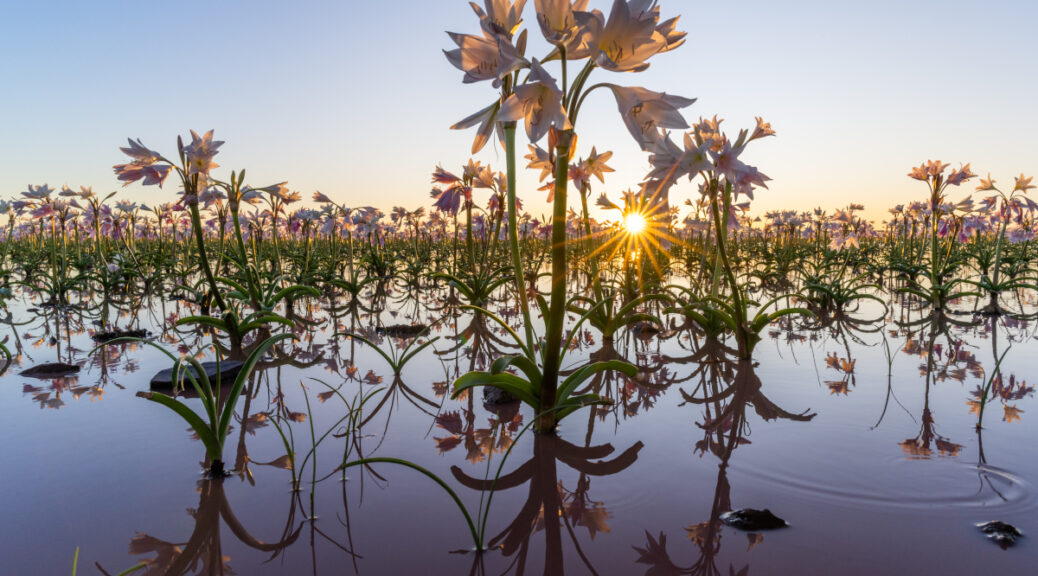Have you ever heard of Namibia’s Sandhof lilies? These breathtakingly beautiful plants are a wonder to behold. Experiencing the rare natural phenomenon when they bloom in their multitudes should be on everyone’s bucket list! By photographer Kyle Goetsch
In January 2021, I happened to be in Namibia photographing the unusual rains in the southern parts of the country. I heard about the Sandhof lilies blooming from a friend of mine in the area. As a landscape photographer, I knew I couldn’t pass up this opportunity. I changed my plans and made my way to Sandhof Farm near Maltahöhe. It’s a sight I won’t forget: flowering lilies in about a foot of water. And all this in the most unexpected place.
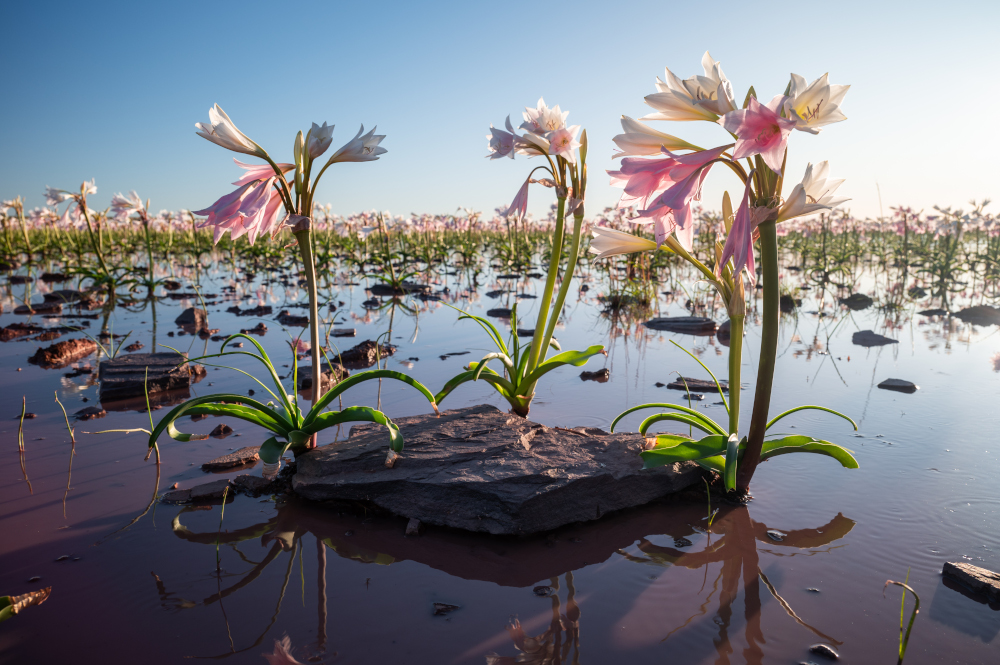

I was lucky enough to capture some incredible images with stormy skies. But at this point the lilies had already begun to wilt as I was right at the end of the blooming cycle. This made me determined that the next time I had the chance to capture this amazing natural phenomenon, I’d be there at the onset of the blooming.
What makes these lilies special?
The Sandhof lilies are examples of the bushveld vlei lily (Crinum paludosum). These remarkable plants are native to the region near Maltahöhe in southern Namibia. This stunning bulbous plant is known for its tall, slender stem and large, trumpet-shaped flowers. However, what makes this lily truly unique is its rare blooming behaviour, which occurs only after significant rainfall in the region.

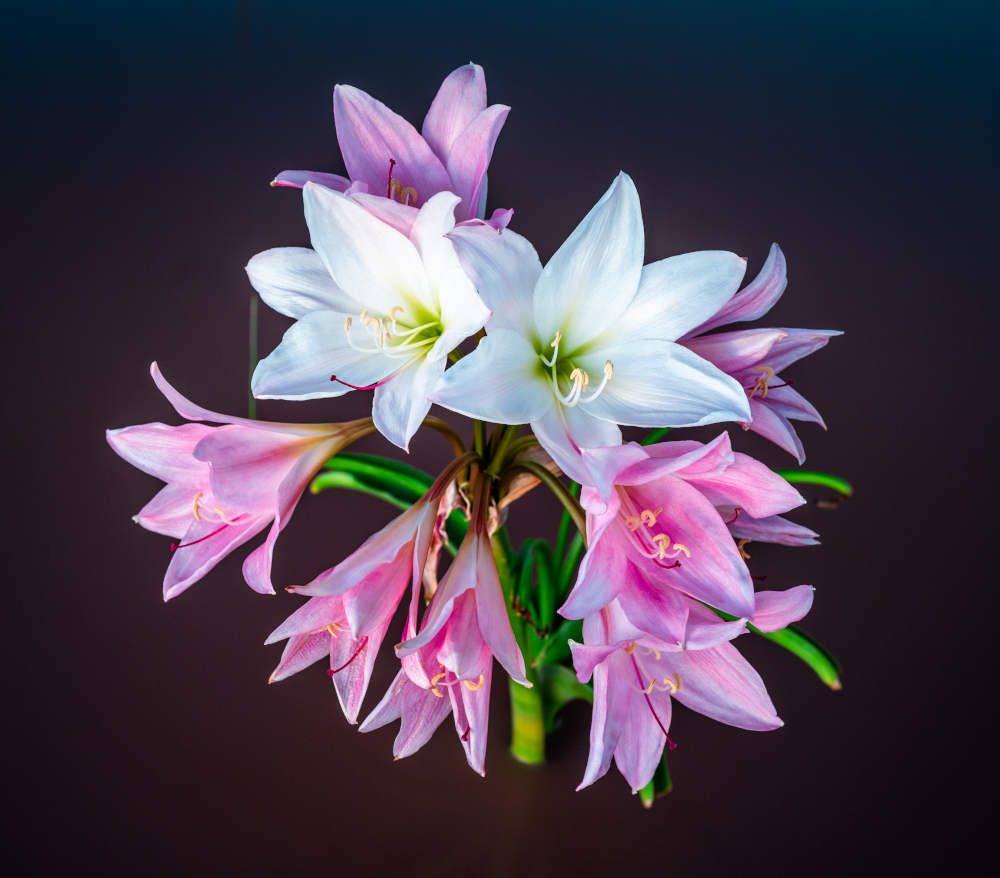
The lily is typically found growing in pans, which are shallow depressions in the ground that collect rainwater. When there is enough rainwater in the pan, the plant produces its striking pale pink or white flowers. There is a 700ha pan of this sort on Sandhof Farm, about 40km outside of Maltahöhe on the D861 dirt road.
The Sandhof lilies bloom in their hundreds of thousands only when enough rain has fallen to fill the pan. The plants need approximately 15-30cm of water to bloom, which occurs only every few years. When the lilies do bloom, they do so for only 6-8 days. Due to the short period and remote location of the farm it is extremely rare to witness. Once the plants have finished blooming, the farm animals are allowed into the pan to eat the lily heads and stalks.
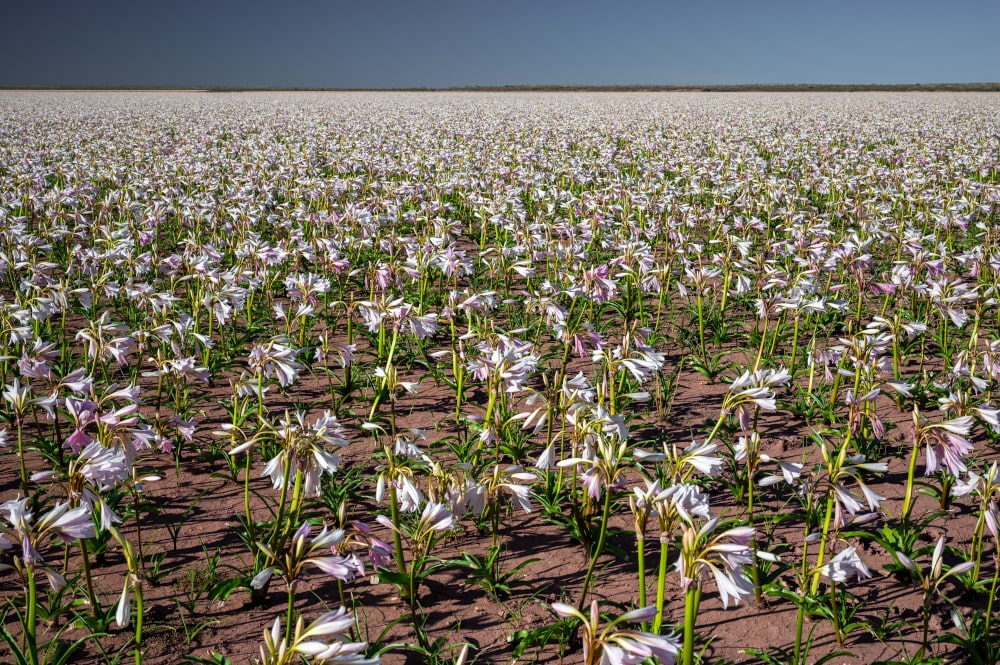
The rarity of the lilies’ blooming behaviour and sheer scale of the event is what makes it so special. It is not uncommon for several years to pass between blooming, depending on the rainfall patterns in the region. As a result, this event is eagerly anticipated by locals and visitors alike.
Seeing the Sandhof lilies in 2023
In 2022, I wasn’t able to visit the farm for the brief blooming period, but earlier this year, I watched and waited for the first rains to fall near Maltahöhe. I already had a trip planned to Namibia with some friends, but I wasn’t certain we would be there at the right time, or if the lilies would even bloom this year. The farm can only confirm several days before if it will happen, and then they only open their gates to the public for about five days. There was a possibility we would miss this rare event.
When I heard there was a chance of the lilies blooming in mid-February, I shifted my plans and left a few days early to make it there in time. This involved a 14-hour drive through the night from Cape Town to get there when the lilies started to bloom. I camped in the town of Maltahöhe at the Old Bridge Campsite, about 45km from Sandhof Farm. There is a small hotel there as well, and a few bed and breakfast options. However, these book out really quickly once locals hear the lilies are about to bloom.
Capturing the natural phenomenon
I was lucky on this trip to have few visitors while photographing the lilies. I also had perfect conditions one morning with no wind at all, resulting in stunning reflection images of the lilies. A photography tip, based on my personal experience, is to photograph at sunrise. The afternoons generally have wind, which creates ripples on the water and moves the lilies, so it is difficult to take sharp images of them. In contrast, the mornings are usually still. You can also get some great light with few other people around, as most visitors will arrive a few hours after sunrise.

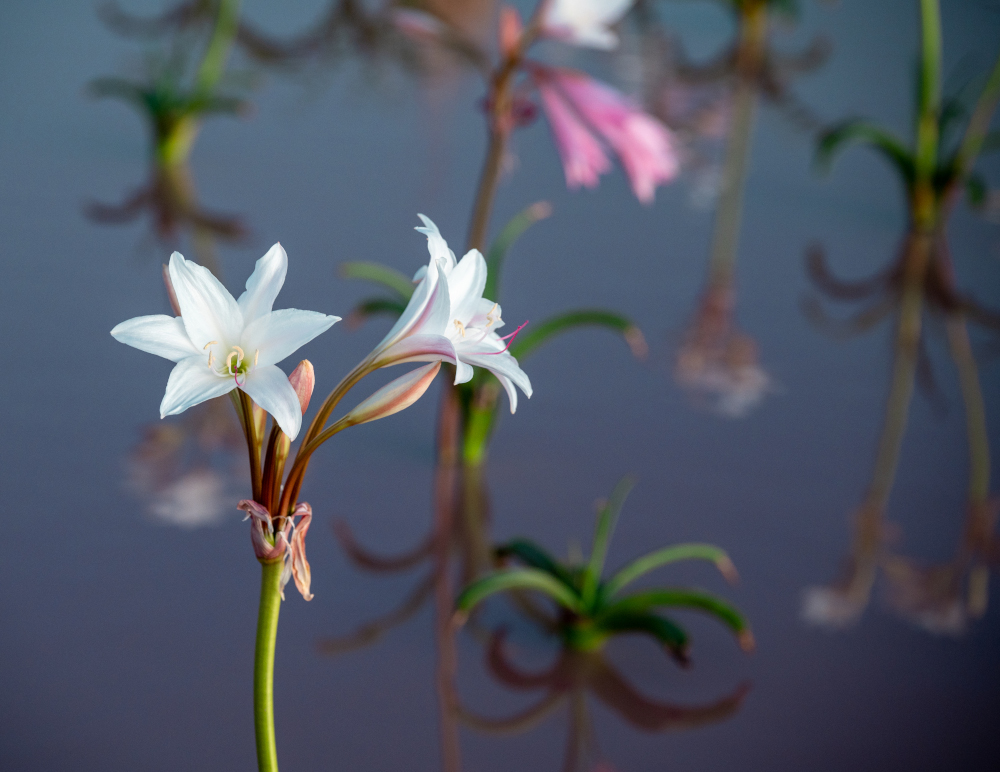
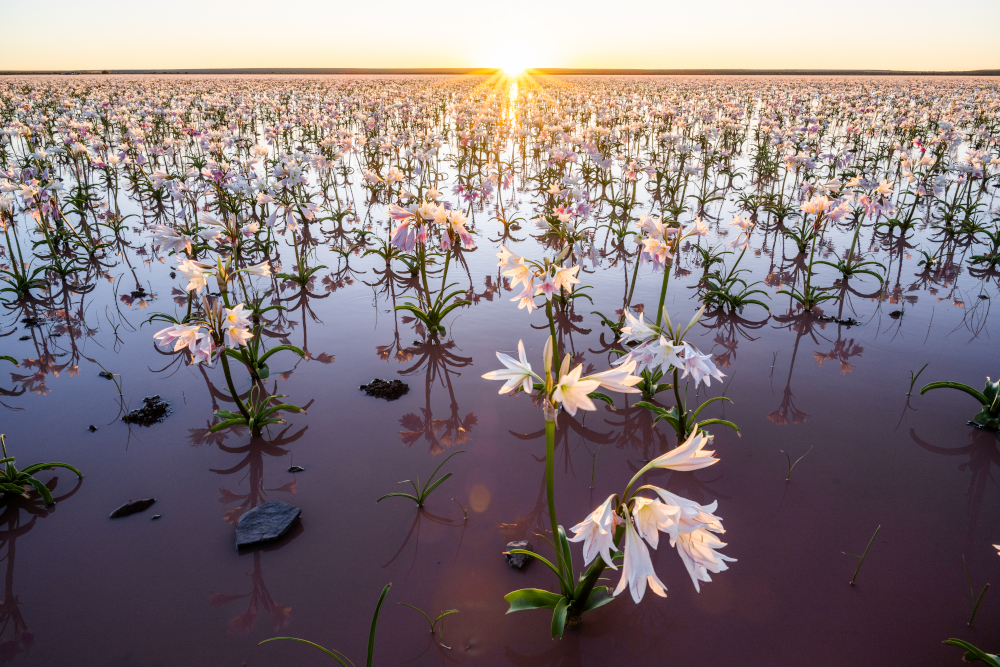
It is very difficult to capture the scale of the lilies in their millions as the pan is flat. It can, therefore, help to get low down and break the flat horizon with the lilies’ stems. Shooting a sunburst amongst the lilies can also add an extra element to your images.
It is extremely challenging to plan a trip to see the lilies because of the unpredictability of when they will bloom. The best way is to contact the farm directly and find out if they are blooming. The farm also posts updates on their Facebook page, which you can follow. My best advice, though, is to be ready to go at short notice. As soon as the farm announces they are opening, drive there or fly into Windhoek and rent a car. Do not wait a few days as the best lilies are at the start of the bloom. This is a rare and time-sensitive natural phenomenon but one well worth experiencing.
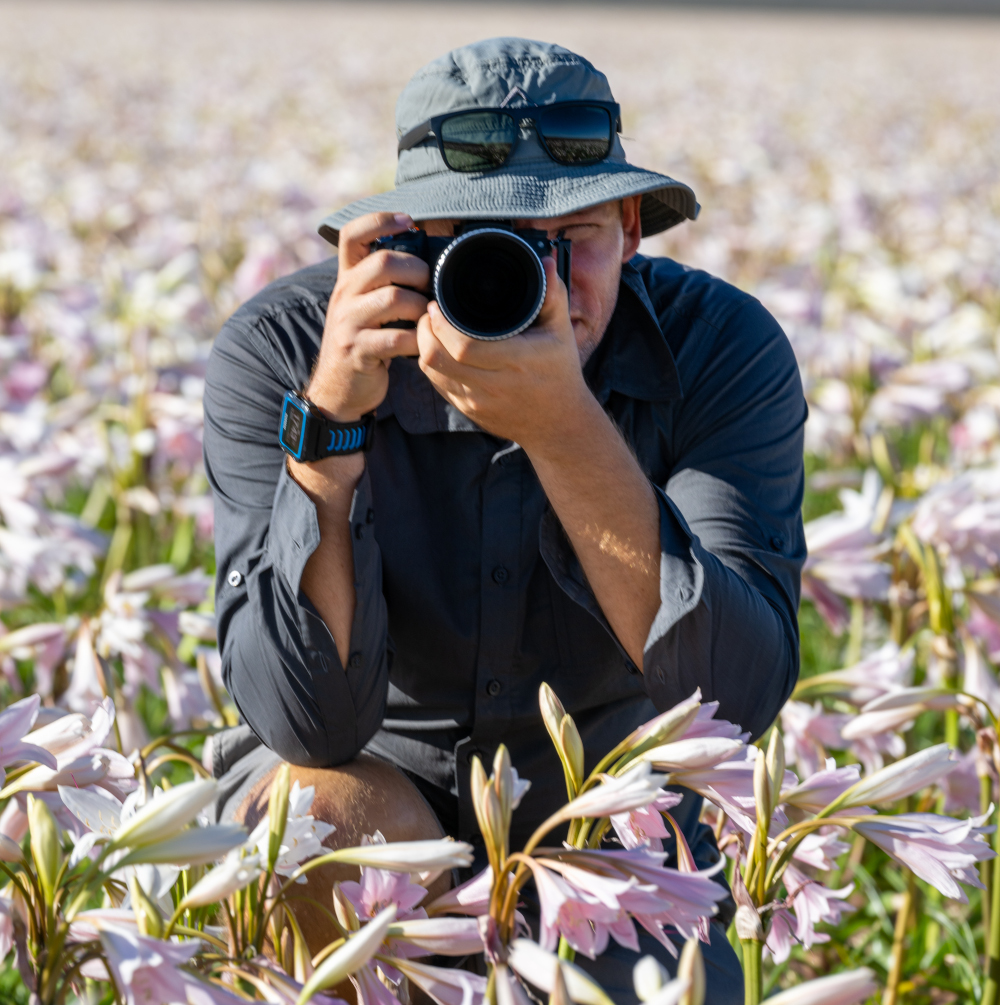
For more pictures and videos of this natural wonder, follow @kyleincpt on Instagram or KyleinCpt on Facebook.
Want to know more about Namibia’s unmissable sights and must-visit places? Our Namibia Self-Drive Guide includes destination descriptions, accommodation listings, advice on vehicle preparation, travel tips and maps. In short, everything you need for an overlanding trip.
